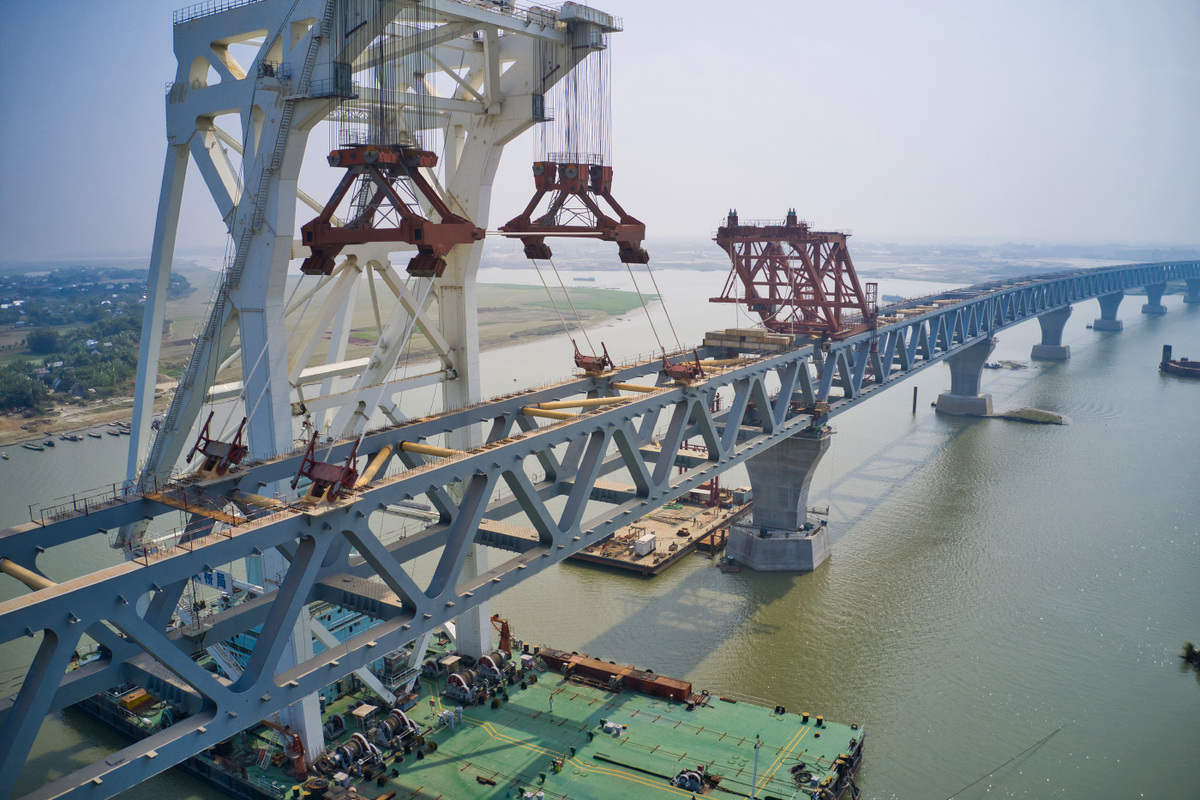Democracy in global decline, full-blown conflict in Europe and the Middle East, and Western hegemony up for grabs — this is the reality for a unipolar world increasingly challenged by multipolarity.
The challenge in question? China.
Although the United States maintains global dominance, the rise of China as an economic and military superpower is quickly creeping up on the rules-based world order the West so meticulously constructed after World War II. Regarding a 2022 report that characterized China as “the most consequential and systemic challenge to our national security and to a free and open international system,” a senior U.S. Defense Department official confirmed that “Xi Jinping and the PRC leadership are determined that the armed forces should take a more active role in advancing the PRC’s foreign policy goals globally.” As such, China has been able to channel its economic prowess into military spending. In 2023, for instance, Beijing marked a 7.2% increase in planned defense spending.
However, it is not only China’s hard power that should concern the United States and its allies — for China’s investments in global soft power have come to rival, and in some ways supersede, that of the United States. With the Chinese threat looming on the horizon, Beijing’s increasingly ambitious use of soft power to achieve global hegemony poses a greater threat to U.S. interests than ever before.
Nowhere is this more apparent than in the case of China’s Belt and Road Initiative (BRI). Of all of China’s economic undertakings — with diplomatic undertones — abroad, the BRI is perhaps the largest, most comprehensive and most ambitious.
Launched in 2013, the BRI is a massive global infrastructure project led by China aiming to connect East Asia with Europe through physical infrastructure, through development and investment initiatives in 149 countries (accounting for two-thirds of the world’s population and 40 percent of global GDP). The initiative could entail up to $1 trillion in Chinese investments globally — seven times more than what the United States spent under the Marshall plan. Since its original conception, it has expanded to involve Africa, Oceania and Latin America, where China is increasingly upping its global presence through soft power engagement.
On the one hand, the BRI offers economic benefits to China, including the expansion of international use of the Chinese renminbi currency, increased economic development of its neglected westernmost regions (e.g. finding energy routes through the Xinjiang province that the United States cannot disrupt) and a restructuring of the Chinese economy to avoid the middle-income trap. More importantly, however, the BRI is an effective ploy to increase Chinese influence globally through economic soft power. The Council of Foreign Affairs, for instance, describes China’s global ambitions with BRI as “staggering,” adding that “for Xi, the BRI serves as pushback against the much-touted U.S. ‘pivot to Asia.’”
Critics say the BRI is a Trojan horse to give China a physical foothold in key regions, creating a “debt trap” for the developing world and thereby increasing China’s diplomatic leverage.
And the critics are probably right.
Since BRI’s launch in 2013, overall debt to China has skyrocketed, exceeding 20% of some countries’ GDP. To date, BRI accounts for 37% of low income countries’ debt at a whopping $13.1 billion and over 50% of all debt owed by poor countries to official creditors.
Moreover, lack of transparency and China’s requirement that participating countries use Chinese firms paint the red flag a deeper shade of crimson than it initially appeared. For instance, in Ghana and Zambia, Chinese BRI loans led to sovereign default, and in Malaysia, suspicions around former Prime Minister Mahathir bin Mohamad’s sudden shift from being expressly opposed to the BRI toward later announcing his “full support” add to suspicions around Beijing’s true motives. To this point, China refused an invitation to join the Paris Club countries, which promote transparency about foreign debt owed to them.
The bottom line is that for China, the BRI is inherently political — and many countries in the developing world are now paying the price. For some, that price has been paid in installments of their sovereignty, slowly chipped away by Beijing.
Arguably, the United States has made rivaling, and in many cases, exceeding, economic investments in regions where China’s BRI has penetrated. However, U.S. economic aid often comes in the form of grants and humanitarian aid — i.e. with strings attached. Many countries, especially those ruled by authoritarian regimes, prefer incurring debt to China, which has an explicit policy of non-intervention in other countries’ domestic affairs, rather than meeting U.S. criteria (such as enforcing free and fair elections, anti-corruption measures, human rights promotion, etc.) to accept U.S. aid.
China also exclusively recognizes states as the only beneficiary of its aid, while the United States works with NGOs, institutions and governments that share its values — making China’s offer much more attractive to authoritarian regimes unwilling to cede power to democracy.
Moreover, many of China’s other efforts to exert soft power globally are in the same vein as the BRI. For instance, in 2022 China proposed the Global Development Initiative and the Global Security Initiative, relatively vague international proposals that were joined by 60 partners and endorsed by 80 countries, respectively. Others include the Security Framework Agreement with the Solomon Islands, the Regional Comprehensive Economic Partnership comprising of 15 Asia-Pacific country members and the Shanghai Economic Cooperation Organisation (SCO) comprising of 24 member states and affiliates, including major rivals like India and Pakistan and Armenia and Azerbaijan — paving the way for future potential diplomatic mediation leverage for Beijing.
All of these initiatives seem to share a common goal: to build a post-Western international order where Chinese hegemony reigns supreme. However, many of their successes seem surface-level, at best. Some might argue that considering its massive scale and budget, the BRI has fallen short of its expectations when it comes to tangible outcomes. Since 2013, many of the BRI’s targets have not come to fruition and Beijing’s plan stands to crumble entirely if not properly executed.
If this is the case, why should the BRI pose any real threat to U.S. hegemony?
In truth, it does not. No amount of soft power in the short-run can propel China to the heights the United States has achieved through decades of diplomacy, forged alliances and established global legitimacy.
What does matter here is Beijing’s ambition — and more specifically, the sheer gall and scale of it. The BRI is not a threat because of what it is, but rather what it represents: a Chinese commitment to laying the foundations for an international world order post-U.S. hegemony.
While China prepares for the day after (U.S. hegemony falls, that is), the United States must remain proactive in its efforts to prevent such a day from coming. Whether that means strengthening its ties with key allies like South Korea and Japan, or finally crafting a more precise East Asian economic policy, one thing is clear: the status quo spells danger for Washington.
And unless the United States can meet China’s soft power challenge with exponential ferocity, the roots that take hold will be much harder to weed out in the future.







